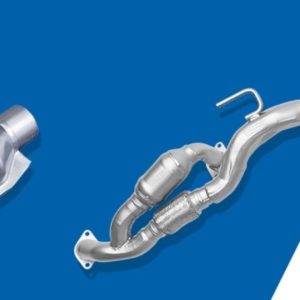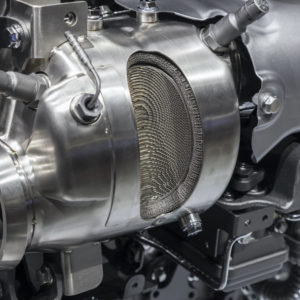In 2018, approximately 90,000 acres of the Sierra National Forest near the Yosemite were burned to the ground. The Ferguson fire burned for over a month before it was fully contained, injuring roughly 19 people and causing the death of two firefighters in its wake. Investigations later discovered the cause of the deadly fire—a “superheated” catalytic converter.
But if you immediately park a vehicle that has been driven in tall dry grass, it’s a fire hazard even if the converter is working normally. The temperature at which dry grass will catch fire depends on the type of grass, the surface temperature, the duration of contact, and the ambient conditions. One study found that dry grass can catch fire at temperatures as low as 575 degrees Fahrenheit if the object is in contact with dry grass for as little as 10 minutes. Again, even a normally operating catalytic converter is plenty hot enough to ignite the grass.
If you immediately park a vehicle that has been driven in tall dry grass, a catalytic converter is a fire hazard even if it is working normally. The temperature at which dry grass will catch fire depends on the type of grass, the surface temperature, the duration of contact, and the ambient conditions
–Richard McCuistian, ASE Certified Master Automobile Technician
Can the catalytic converter catch fire?
The short answer is no. The catalytic converter itself won’t burst into flames unless something flammable has “melted” onto it by direct contact (like grocery bags), but it can become a fire hazard. An overheated catalytic converter can ignite surrounding flammable materials while it’s running hot.
Under normal circumstances, catalytic converters operate within a temperature range of 1,200 to 1,600 degrees Fahrenheit. An overworked or clogged catalytic converter, on the other hand, can reach temperatures above 2,000 degrees Fahrenheit.
The trouble starts when hot parts of the catalytic converter break off from the car or pieces of exhaust carbon shoot out of the tailpipe. These could ignite a patch of dried grass or a pile of dried leaves. In theory, these can even ignite your car’s cabin insulation and carpeting through the heat shields and floor pan. At the same time, extremely high temperatures may cause long-term damage to the exhaust system’s surrounding parts.

What causes a catalytic converter to overheat?
There are several reasons why your vehicle’s catalytic converter may overheat. Here are some common causes you should look out for.
Worn-Out Spark Plugs
One of the most common causes of an overheated catalytic converter is an engine that isn’t working properly, which can be a result of worn-out spark plugs or a badly out of balance rich air-fuel mixture. Damage on the wire or tip of the spark plug can cause the engine to misfire, leading to a spike in exhaust emissions. For this reason, modern ECM/PCMs will kill the fuel feed to a misfiring cylinder to protect the catalytic converter. But if the injector is mechanically stuck open, shutting off the electrical trigger won’t prevent the nozzle from delivering fuel all the time.
Excess Antifreeze Entering the Exhaust
Excess antifreeze entering the exhaust system can create a heavy buildup of carbon deposits in the catalytic converter. Carbon soot may coat the catalyst, making it unable to convert harmful emissions.
Carbon deposits can also clog emissions flow and increase backpressure in the system. If this happens, burnt exhaust gasses can be drawn back into the combustion chamber, resulting in reduced efficiency and overheating in the engine compartment.
Malfunctioning Oxygen Sensor
The oxygen sensor is a component that measures the engine’s air-to-fuel ratio. Incorrect readings due to sensor failure can cause the engine to run rich. When too much fuel is delivered to the engine, raw fuel is likely to be pushed into the exhaust system. If this happens, internal temperatures can rise to a point where the honeycomb mesh inside the converter and substrate are destroyed.
Damage from Road Debris
The catalytic converter can get cracked or punctured by impact from road debris or by running over a curb because it’s located underneath the vehicle. A leak in this component may result in an increase of backpressure in the system, causing it to overheat.
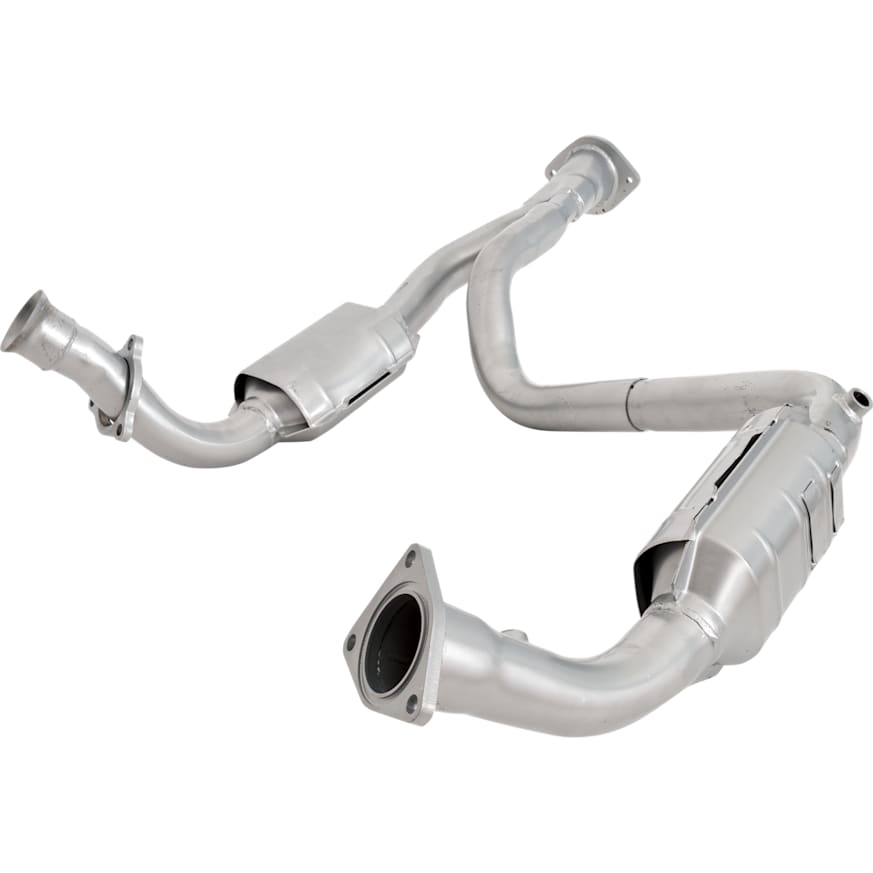
How to Prevent Fires Involving Overheated Catalytic Converters
Catalytic converters do not have moving parts, which means overheating is more likely to be caused by factors outside the component itself, such as engine system failure or fuel contamination. Therefore, the best way to prevent a failing catalytic converter is to be diligent about following your vehicle’s maintenance schedule.
Here are other ways to keep your catalytic converter from overheating and becoming a fire hazard:
Watch out for symptoms of a bad catalytic converter.
Repair and replacement of a catalytic converter must only be done by a licensed mechanic. While it’s not advisable to work on this part on your own, there are several signs that can help you determine when you should have it checked by a professional.
Reduced Engine Performance
A clogged or damaged catalytic converter will make it harder for your vehicle to accelerate. Burning more gas than usual for the same amount of power during acceleration can be a sign that there’s a problem with your catalytic converter.
Rattling Noises
Noises that sound like rocks hitting the underside of your vehicle are another sign you should look out for. Abnormally high temperatures can damage the internal mesh of the catalytic converter, which can produce rattling noises.
Sulfur Smell from the Exhaust
A rotten egg-like smell may exude from the exhaust system if the sulfur in gasoline is not properly converted into odorless sulfur dioxide. You may also observe dark smoke released from the exhaust along with this odor.
Check for applicable vehicle recalls.
Recently, there have been multiple recalls for vehicles that have faulty catalytic converters and engine components that may compromise the exhaust system. You may check the National Highway Traffic Safety Administration (NHTSA) website for information on recalls applicable to your vehicle.
For instance, the 2017-2018 Chrysler Pacifica Plug-in Hybrid was recalled due to a failure of the gas engine to restart properly after running on PHEV propulsion mode. This issue could cause unburned fuel to enter the exhaust system and melt the catalyst.
2012-2016 Kia Soul SUVs equipped with the 1.6L Gasoline Direct Injection (GDI) engines were also recalled due to the possibility of overheating catalytic converters. Unusually high exhaust gas temperatures have been observed in the catalytic converter, allowing substrate particles to enter the combustion chamber.
Extreme temperatures in the catalytic converter can result in abnormal engine combustion, which may lead to one or more of the engine’s pistons to break and possibly puncture the engine block. Engine oil is highly flammable and may ignite a fire if it comes in contact with a hot exhaust surface.
How does a catalytic converter work?
Air pollutants have been a concern in major cities as early as the 1940s. Smog and low-level ozone resulting from noxious gasses produced in the combustion process had long been identified as leading causes of diminished air quality.
The first emission control device installed on a vehicle was the PCV valve, which GM launched in the Corvair in the early 1960s. Prior to the introduction of the PCV valve, crankcase blowby gasses were vented to the atmosphere using a draft tube.
In the ’70s, stricter emissions standards—enforced by the Environmental Protection Agency (EPA) through the Clean Air Act—prompted car manufacturers to develop a range of technologies that would help build “cleaner” vehicles. The modern catalytic converter, which essentially makes the combustion process cleaner, is considered one of the greatest environmental inventions of its time.
The catalytic converter works to transport toxic gasses produced during combustion away from the engine and out from under the vehicle.
Catalytic converters were added to vehicle exhaust systems in the early 1970s, initially to process hydrocarbons and carbon monoxide (unburned fuel molecules) by adding enough oxygen molecules to convert those gasses into harmless CO2.
CO2 is exactly the same gas people and animals breathe out. CO2 is heavier than the nitrogen and oxygen in the atmosphere and remains near the ground where it keeps plants healthy so that they, in turn, “breathe out” oxygen. CO2 is a win-win all the way around.
Another harmful gas created during combustion turns out to be oxides of nitrogen (NOx), which is the bonding of oxygen and nitrogen during the combustion process. Initially, EGR valves were added to recirculate a small amount (5%) of inert exhaust gas into the combustion chamber to keep combustion temperatures below 2500 degrees Fahrenheit where NOx forms. But as emission standards tightened, a catalyst “brick” was added that is nearer the engine which dealt with the NOx. By 1996, with the onset of OBD2, there was an additional O2 sensor added behind the front catalytic converter to monitor its ability to store oxygen.
Watch this video to get an idea of how catalytic converters work:
You can also check out these videos for tips on how to replace your catalytic converter:
Catalytic Converter and Spark Plug
As previously discussed, a Catalytic Converter can fail because of a range of issues. These include faulty spark plugs and oxygen sensors, as they can cause the engine to run rich and burn the catalytic converter. When this happens, it’s critical to resolve the problem so that your vehicle functions properly and complies with your state’s emission laws. Luckily, finding compatible parts is easy here at CarParts.com.
Here at CarParts.com, you can choose from our curated list of compatible parts from the most reputable aftermarket manufacturers. Simply input your vehicle’s make, year, model, and engine type into our vehicle selector. Shop confidently knowing our parts are made following OE specifications and have passed stringent quality control standards.
So what are you waiting for? Shop for replacement oxygen sensors, spark plugs, and catalytic converters at CarParts.com today!
Products Mentioned in this Guide
Any information provided on this Website is for informational purposes only and is not intended to replace consultation with a professional mechanic. The accuracy and timeliness of the information may change from the time of publication.


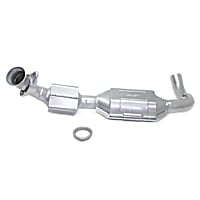 Catalytic Converter
Catalytic Converter
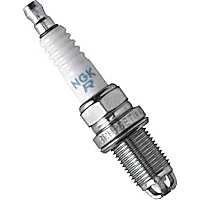 Spark Plug
Spark Plug
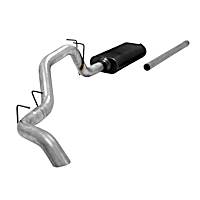 Exhaust System
Exhaust System
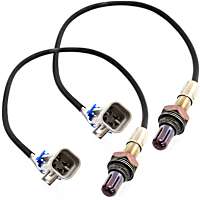 Oxygen Sensor
Oxygen Sensor
